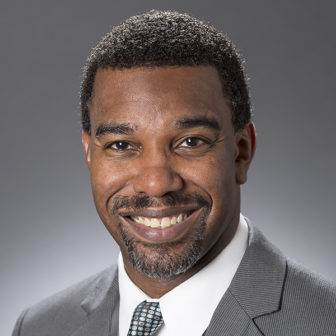![]() Like most, when I became a juvenile probation officer I entered the field envisioning myself as a counselor or a mentor. But my day-to-day duties were centered around surveillance, compliance monitoring and paperwork, and the composition of my caseload further complicated matters.
Like most, when I became a juvenile probation officer I entered the field envisioning myself as a counselor or a mentor. But my day-to-day duties were centered around surveillance, compliance monitoring and paperwork, and the composition of my caseload further complicated matters.
I had many kids who really didn’t need my time and attention, let alone probation. These were kids with first-time and/or low-level offenses. I tried to stay out of their way as best I could and hoped they would not violate probation rules, which would force me to take punitive action.
I had a much smaller group of kids who I couldn’t give enough attention to, or the right kind. These were young people with serious and/or repeat offenses, many of whom had multiple treatment needs, but who also needed basic support and opportunities: positive role models, healthy recreational outlets and constructive activities. I simply didn’t have enough time, training, support and resources to reach these kids the way I wanted to.

Stephen Bishop
Now I’m at the Annie E. Casey Foundation, heading its work on transforming juvenile probation. I am applying my experience as a probation officer to the Foundation’s vision for a fundamental reimagining of probation. This vision has two pillars: 1) reduce the number of young people on probation by diverting a greater share from the system and 2) refashion probation into a more strategic and effective intervention for the smaller number of youth who remain on probation caseloads. This framework is based on decades of research.
For more information on Community-Based Alternatives, go to JJIE Resource Hub | Community-Based Alternatives
Most young people who break the law can be held accountable by their families and communities and be connected to appropriate community resources instead of being referred to juvenile court. Reserving juvenile court resources for youth who present a risk to public safety and who need intervention will improve community safety and get better youth outcomes.
Diversion still underused
Unfortunately, the utilization of diversion and probation has not changed since I entered the field 20 years ago. Diversion is used in just over 40 percent of cases, despite 94 percent of cases being for nonviolent offenses. White youth are diverted at higher rates than similarly situated youth of color. More youth who were either nonadjudicated or adjudicated for status offenses were placed on probation caseloads (rather than diverted) than youth adjudicated for delinquency offenses in 2016 (157,500 compared to 155,500), the most recent year for which data is available.
By diverting too few young people at low risk of reoffending from probation caseloads, juvenile justice systems unnecessarily are directing probation resources away from youth at highest risk to reoffend and most in need of intervention. In doing so, we miss opportunities to address the disparities that exist at diversion, to appropriately empower families and communities as the first response for most youth misbehavior and to lower probation caseloads so that greater attention can be given to the youth who need it most.
It’s only right to acknowledge that there have been many advances in the field since my days as a PO in the late 1990s and early 2000s. Overall, juvenile probation officers today have a much better understanding of the causes of delinquency and the types of programs and services that address delinquency-related needs. Also, they are better trained in techniques that improve interactions with youth and their families. I am proud to have been a part of these advances as a state-level policymaker in Pennsylvania for more than a decade.
However, my experience and research suggest that without significant changes to the fundamental structure and approach to juvenile probation, too many young people will continue to be pulled deeper into the system unnecessarily. Despite the advances I noted, the reality is that probation remains a gateway to incarceration that perpetuates the system’s glaring racial and ethnic disparities.
For more information on Racial-Ethnic Fairness, go to JJIE Resource Hub | Racial-Ethnic Fairness
Young people are being locked up for breaking the rules, not breaking the law, and that is happening disproportionately to youth of color. Close to one-quarter of all out-of-home placements result from probation violations, and more than two-thirds of the youth being incarcerated for technical violations are youth of color. This contributes to a horrific data point: African-American youth are more likely to be confined today than they were 20 years ago.
My most rewarding experiences as a probation officer were the times when I saw a young person really turn it around and get on the right path. That process was never easy, though. It involved working through many ups and downs, giving multiple chances, being creative, accessing untapped resources and forming new partnerships. It took a lot of maneuvering that the system was not designed to naturally support.
Casey proposal would help probation officers
The Foundation’s “Transforming Juvenile Probation: A Vision for Getting It Right” proposes an approach that leaves no probation officer maneuvering independently, while still providing them with the time, space and resources to help every young person on their caseload achieve long-term success. Doing so requires much more than addressing youths’ criminogenic risk and needs. It requires removing barriers that run counter to positive youth development — such as lengthy standard court orders and threats of confinement for breaking probation rules — and rooting every probation practice in the developmental needs of youth.
A sense of family, community, identity and achievement shapes all of us and influences how we see and conduct ourselves. Probation practices should incorporate these central concepts by:
- prioritizing family engagement;
- investing heavily in community partnerships that provide youth with connections to mentors, constructive activities and civic engagement;
- engaging fully in discussions about — and employing strategies to address — the racial and ethnic disparities that characterize juvenile justice in America, and
- using incentives and rewards to motivate and recognize youth for achievements, instead of relying on threats of punishment.
Even the most skilled juvenile probation officer will have limited influence on a young person without the support of their family and community. Family and community members have a greater and longer-term effect on the young person than any probation officer would, given the short-term nature of probation. We can expect teenagers to make only so many good decisions in difficult circumstances without having positive people and activities as outlets. And intervention strategies that do not directly address and acknowledge the severe issues of racial and ethnic inequity within our society and justice system are, frankly, disingenuous to the most affected populations.
Juvenile probation cannot do it alone, nor should it want to. We must shift from positioning probation officers as fixers of delinquent youth to, instead, using probation as a lever to connect our young people to the resources that will help those youth with the longest odds of success be on the path to a bright future.
Given the advances in the field and our knowledge of youth development, the prospects for taking these next steps to truly modernize our system of youth justice have never been brighter. Probation, as the largest part of the system, should be leading these efforts.
Stephen Bishop is a senior associate at The Casey Foundation and former probation officer.

Pingback: Permanency in the News – Week of 2/25/19 – Dr. Greg Manning
I’ve been out of the field for a couple of decades, but I have noticed that periodically good ideas come around, and sometimes they even become an initiative. But, it is hard for that new approach to get much traction. I think it is because good ideas are hard, and are resisted by those on the easy path of the status quo.
I certainly applaud attempts at making the system work better and more effectively. Hopefully, you can find a way to inspire PO’s to want to do the work in a manner that is more challenging and difficult.
For those of us who, in our state at least, have been in working in the realm of juvenile probation for 50 years, we have seen the pendulum (of priorities) swing in some wild ways. In my early days, service was the purpose of probation, and in particular community oriented services; called delinquency prevention at that time. The pendulum is on the move again, and in a way I appreciate. However, in rural America, often it is the Probation Department that is the agency to whom the community looks for community based action and where the direct services can be delivered. Its all a matter of priorities; again.
Funny thing, Steven. I was a Juvenile Parole Office way back in the late 1960’s and into the early 70’s, and experienced the same issues, only more so. When I suggested that my services focus on coordinating with all the community agencies involved with families of the most needy parolees, the answer was “That’s not what we do. Focus on what you can do, and don’t concern yourself with any coordination.”
Great to see that Casey has focused on the problem(s) of developing services that actually help juveniles and their families.
One way to get around a lot of the inherent problems is to rename everything. Name them Juvenile Seevice workers or something similar. Instead of placing on probation place on supervision.
Finally. An enlightened juvenile probation career practitioner possessing a keen historical perspective on the profession and a clear vision of the correct pathway for systemic change will add value to the AECF’s work in this field. Best wishes, Stephen!